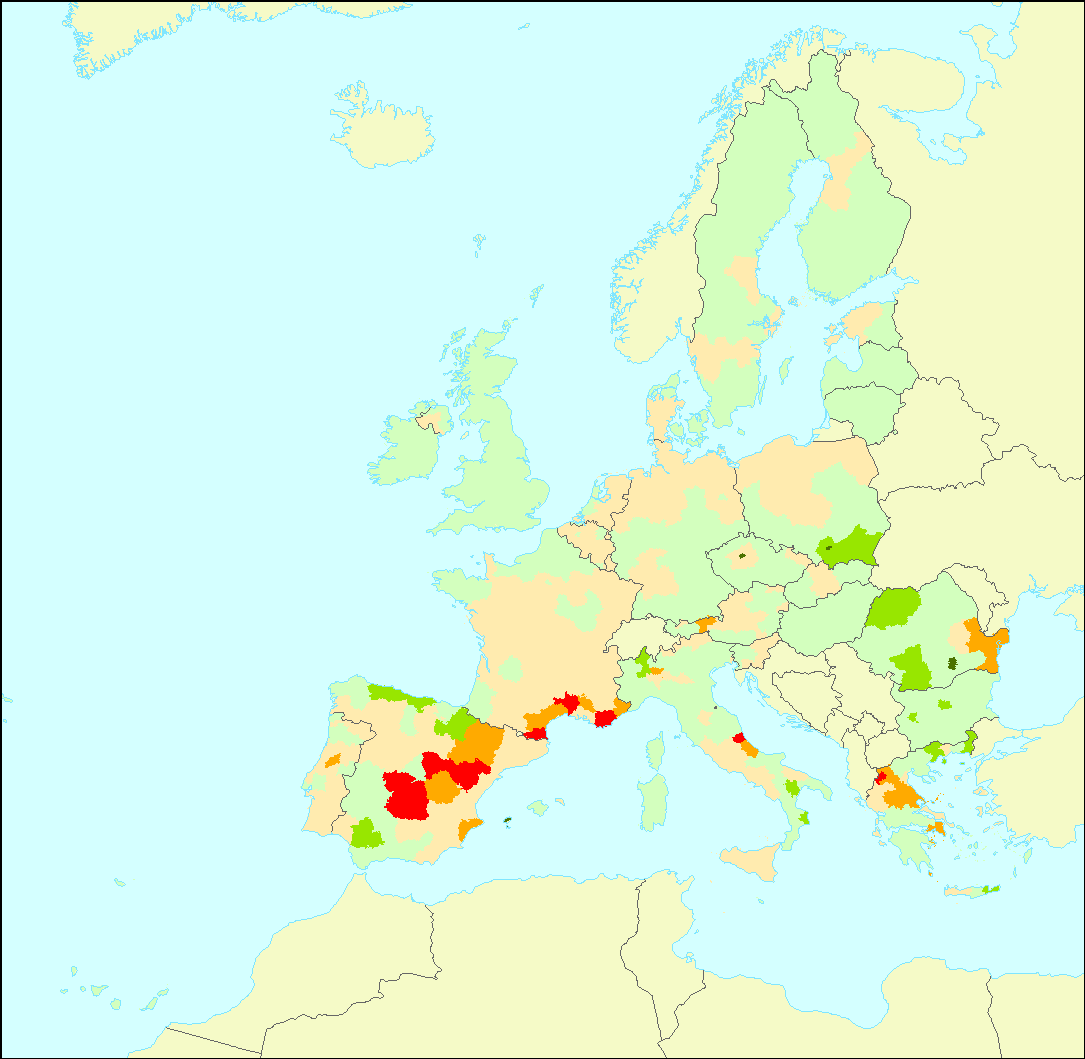European Topic Centre Urban, Land and Soil Systems
Type of resources
Available actions
Topics
INSPIRE themes
Keywords
Contact for the resource
Provided by
Years
Formats
Representation types
Update frequencies
Scale
Resolution
-

The dataset illustrates the potential of soils to serve as a soil biodiversity pool. The potential is expressed as an indexed value from 1 (lowest potential) to 10 (highest potential). The potentials of soil biodiversity throughout Europe have been assessed and mapped by using critical thresholds of the selected variables (e.g. soil PH, texture, land cover among others) that potentially affect the conditions of soils for biodiversity and thus soil biodiversity levels. The dataset has been validated with existing data on soil biodiversity of different projects throughout Europe.
-

The dataset represents a pressure trend indicator as measure of intensification of agroecosystems. The trend indicator is the share of grassland area affected by internal Land Cover flows between CORINE 2006 and 2012, presented at NUTS3 level. Those changes were used to identify the internal flows related to more intense use, mainly linked to the increase in resource and machinery use. The internal flows related to intensification were defined based on an expert consultation done in the context of the ETC/ULS actions.
-

The dataset shows the percentage of grasslands under high pressure from management practices in 2010. The area percentage is calculated in relation to the total grassland area within NUTS3 regions (NUTS2 for Germany). The management pressure on grassland was calculated by combining information of nitrogen input from the Farm Structure Survey (FSS), the Corine Land Use/Land Cover dataset and other environmental characteristics such as topographic conditions, soil and climate conditions (etc). This dataset is part of the condition/pressures assessments done for agroecosystems under ETC/SIA actions for MAES (Mapping and Assessment of Ecosystem Services).
-

The dataset represents a measure of intensification trend of agroecosystems. Nutrient input is a specific measure related to the intensification processes in the management of cropland ecosystems. The average change rate of nutrient input between 2005 and 2010 is used to show these tendencies in the NUTS regions (NUTS3 and NUTS2 for Germany). The data comes from the EEA draft nutrient accounts, developed by EEA and ETC/ULS, and is based on spatial reference data on crop and livestock distribution, yield and livestock statistics, and official conversion factors.
-

The dataset represents a pressure trend indicator as measure of intensification of agroecosystems. The trend indicator is the share of cropland area affected by internal Land Cover flows between CORINE 2006 and 2012, presented at NUTS3 level. Those changes were used to identify the internal flows related to more intense use, mainly linked to the increase in resource and machinery use. The internal flows related to intensification were defined based on an expert consultation done in the context of the ETC/ULS actions.
-

The dataset represents a measure of intensification trend of agroecosystems. Nutrient input is a specific measure related to the intensification processes in the management of grassland ecosystems. The average change rate of nutrient input between 2005 and 2010 is used to show these tendencies in the NUTS regions (NUTS3 and NUTS2 for Germany). The data comes from the EEA draft nutrient accounts, developed by EEA and ETC/ULS, and is based on spatial reference data on crop and livestock distribution, yield and livestock statistics, and official conversion factors.
-

The total nitrogen input to agricultural soils for the year 2010 is represented in kgN/ha/yr at a 1 km resolution. Nitrogen input includes organic manure application, inorganic fertilizer input, atmospheric deposition and biological fixation. The data comes from the EEA nutrient accounts, developed by EEA and ETC-ULS, and is based on spatial reference data on crop and livestock distribution, yield and livestock statistics, and official conversion factors (see lineage for details). The geographic coverage is EU 27 (2007).
 RUC Geo-Data catalogue
RUC Geo-Data catalogue